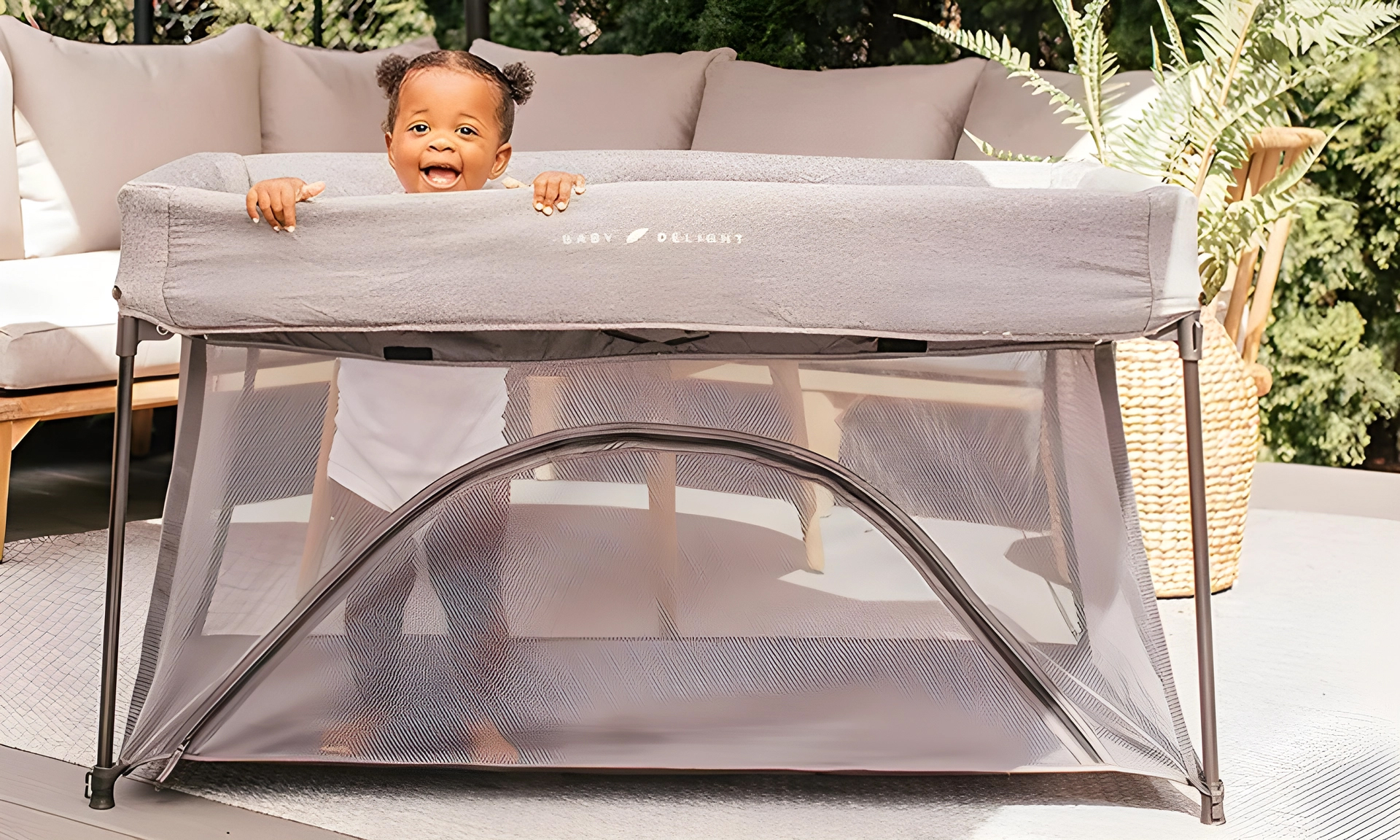
The Quiet Revolution of Sleeping on the Go
Before I became a sleep consultant, I used to think that travel with a baby was just a matter of “packing smart.” Diapers, wipes, extra outfits — the usual suspects. I didn’t realize the most important thing we pack, emotionally and practically, is the sleep space. It’s the anchor in all the noise. And for families who move often — whether it’s cross-country, cross-town, or just crossing the hall to visit relatives — a good travel crib becomes more than a product. It becomes a portable version of calm.
You’d be surprised how many messages I get from tired parents after a trip: “Olga, he just wouldn’t nap!” or “She cried every time we put her down in the hotel crib.” But here’s the thing: babies don’t just need a place to sleep — they need their place to sleep. Something familiar. Something that smells like home. Something that says, “This is safe.”
That’s what a thoughtfully chosen travel crib can offer. It isn’t about luxury or high-tech design — it’s about how it fits into your child’s sense of routine. Whether you’re visiting grandparents for a week or spending the night in a borrowed guest room, your baby deserves a bed that helps them feel centered. And let’s be honest — so do you.
The Many Faces of the Travel Crib
Pack-and-Play: The Sturdy Classic
Pack-and-play travel cribs are the dependable option many parents turn to when planning overnight stays or longer travel. These models usually feature a rectangular base, mesh sides, and a collapsible frame that folds into a travel bag. They’re heavier than other options, yes, but that weight comes with stability — a huge plus if your baby is starting to roll, crawl, or even pull up.
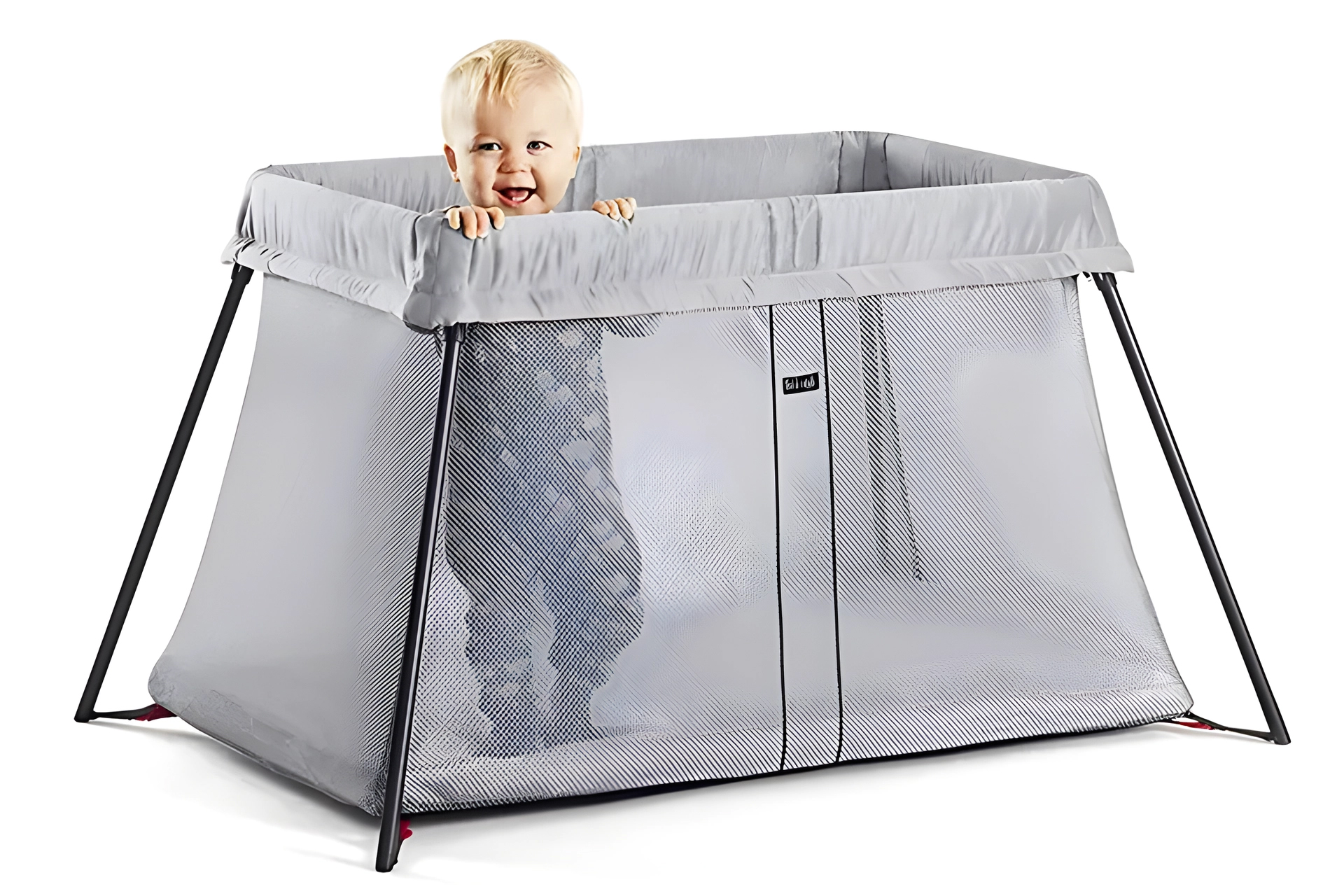
I’ve worked with several parents who love this type of crib specifically because it doubles as a playpen. When you’re in a hotel room or an unfamiliar space, being able to place your baby somewhere safe while you shower, unpack, or make a snack can be the difference between chaos and sanity.
The pack-and-play saved me during our first trip to my in-laws. We were in a tiny room, but I could trust that our son wasn’t going anywhere while I caught five minutes of peace.
Just keep in mind: the added bulk makes this crib better for car travel than air. Some brands offer wheels or detachable bassinets, but these features can also increase weight and complexity. Before buying, check the folded dimensions and try a test assembly — especially if you’ll be setting it up solo after a long day of travel.
Pop-Up Cribs for Spontaneous Escapes
Pop-up travel cribs are ideal for families who want to stay light and flexible. Unlike their bulkier cousins, these cribs are designed for quick getaways, airport-friendly dimensions, and minimal setup time. They usually rely on a spring-loaded mechanism that lets them unfold in seconds — think of it like a tent for your baby, but safer, cozier, and purpose-built for sleep.
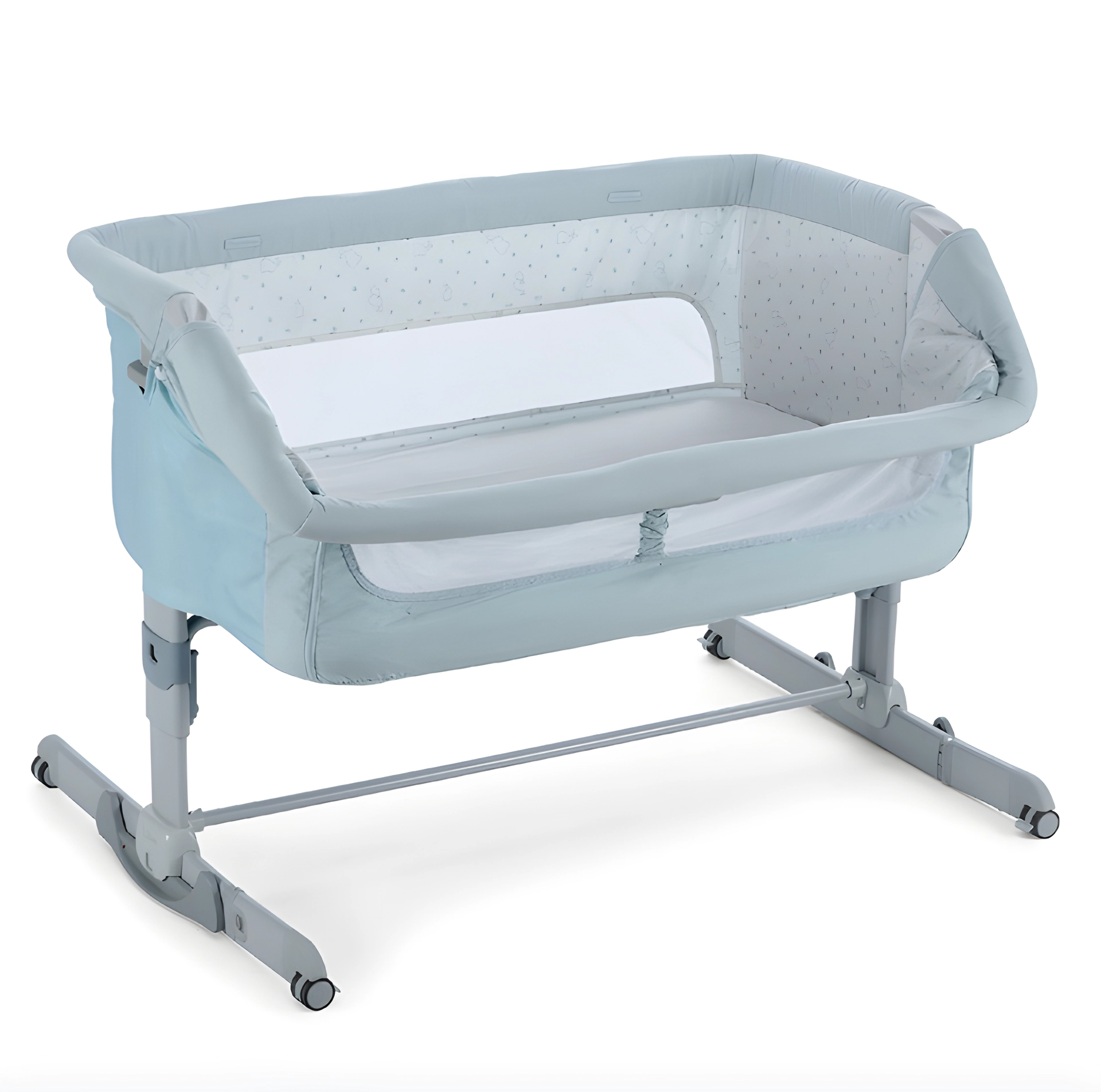
The first time I tried one was during a weekend trip to the mountains. Our son was six months old and still napping three times a day. I didn’t want to lug around our heavy cot-style crib, so we tested a lightweight pop-up model that fit into our suitcase. It wasn’t perfect — there were no extras, no padding — but it did its job. He napped under the shade of a pine tree, and I finally drank hot coffee without pacing.
These cribs are especially popular with active parents — hikers, campers, digital nomads, or even just city dwellers without car space. But they do have limitations. Most are suitable only until about 18–24 months, and some have very thin mattresses that may not work well for babies used to a firmer sleep surface.
Ventilation is another key consideration. Look for mesh sides that allow airflow and visibility, especially if you plan to use the crib outdoors. Some models even come with built-in insect nets — essential if you’re staying in warmer climates or older houses with questionable screens.
Hybrid Options for Families In Between
If you find yourself torn between sturdiness and portability, hybrid travel cribs might be your answer. They combine the structure of a pack-and-play with the lightweight appeal of pop-up models. Think foldable frames made of aluminum, soft yet supportive mattresses, and often a zippered entry that allows your crawling baby to go in and out safely.
These are great for parents who travel occasionally but still want one crib to do it all — whether that’s sleepovers at grandma’s, visits to a rental house, or even just moving room to room during a home renovation. One mom I worked with kept her hybrid crib in the trunk of her car “just in case.” It became her emergency nap solution on long drives, picnics, and even weddings.
Some hybrids offer higher mattress positions for newborns, which saves your back, and can later drop down when your baby begins to sit or pull up. That flexibility is gold during the first year when changes come fast and often without warning.
The price of hybrid cribs tends to fall somewhere between the extremes — more than a pop-up, less than a luxury pack-and-play. But in many cases, you’re paying for real-world usability. Always test the fold mechanism before buying; the last thing you want is to be stuck wrestling aluminum poles at 10 p.m. in a hotel room.
What It Really Means to “Travel Light” as a Parent
“Traveling light” used to mean tossing some clothes into a carry-on and sprinting through terminals with earbuds in. Then came parenting — and suddenly traveling light meant choosing between a white noise machine or an extra swaddle. The phrase doesn’t lose meaning; it transforms. You begin to understand what your baby actually needs and what’s just taking up space.
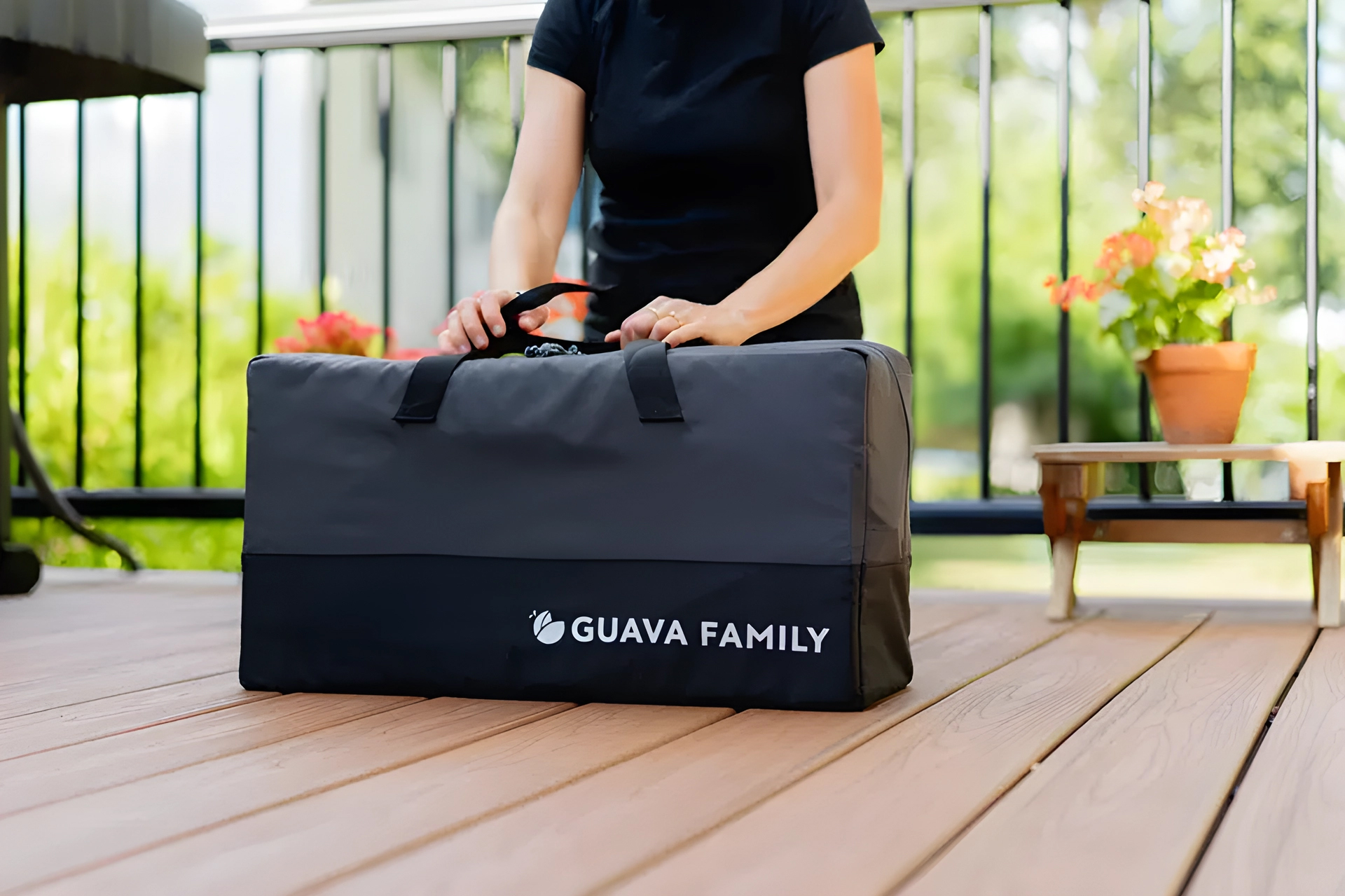
Let’s be honest: modern parenting is filled with products promising to make things easier. And when it comes to sleep, we’re especially vulnerable. If something claims it’ll help your baby nap better or fall asleep faster, we’re ready to try it — especially if sleep has been hard-won. But bringing five “sleep aids” on a trip can backfire. Your luggage overflows, setup takes forever, and none of it works in the new environment anyway.
What does help? Familiarity. Not ten gadgets, but one consistent, predictable sleep space — and the rituals around it. I once coached a family who traveled monthly due to military postings. They carried a single travel crib, a swaddle they never washed while on the road (for scent familiarity), and a small bedtime book. Their baby slept better than many at home. Why? Not because they brought everything — but because what they brought mattered.
Here’s where a travel crib shines. It becomes a signal, a cue: “Ah, it’s time to sleep.” Babies read patterns better than we think. A crib that looks, smells, and feels the same each night — even in different cities — provides stability when everything else is in motion.
And yes, you can absolutely make sleep portable. But to do that, you need to make peace with letting go of excess. Leave room for your arms to carry them, not just their things. Let your gear support the experience — not define it.
Choosing the Right Crib for Your Rhythm, Not the Catalog
Age and Sleep Habits: What Really Matters
Forget the marketing age ranges — “newborn to toddler” can mean wildly different things depending on your child’s sleep habits, growth pace, and temperament. A 10-month-old who happily stays on their back is a very different sleeper than one who’s attempting parkour from the mattress. That’s why I always ask: how does your baby sleep now, and how do you expect that to change during travel?
If your baby is under six months and still needs a snug, womb-like space, you might get more success with a compact model that feels like a soft enclosure. Once they start sitting or standing, safety rails and crib height become non-negotiable. A family I worked with tried to use a sleek Scandinavian crib on a trip to Vienna — stylish, yes, but their son pulled himself up in seconds and nearly tipped it over. That crib was designed for passive babies, not mobile explorers.
Babies don’t follow brand timelines — they follow their own. Choose based on the baby in front of you, not the box they came in.
Pay attention to mattress firmness too. If your child has been sleeping on a firm surface at home, don’t switch to a soft travel option suddenly — the sensory shift can make them restless. Also: don’t overestimate the “bassinet stage.” Many babies outgrow travel bassinets in 2–3 months, especially if they’re tall or start rolling early.
Space, Storage, and Where You’ll Use It
Where will the crib actually go when you arrive? That sounds obvious, but it often gets overlooked in the excitement of booking and packing. I’ve seen parents try to set up full-size travel cribs in tiny hotel bathrooms at 11 p.m. while whisper-yelling at each other because there was no room in the bedroom.
Measure in advance. Not just the room — but your trunk, your hallway, the flight cabin if you’re bringing it on board. If you’re staying somewhere you’ve never been, reach out and ask for floor plans or exact dimensions. I had a client who stayed in a rustic cottage in the UK where the “bedroom” was a loft accessible only by ladder. Their travel crib? A 13-kg pack-and-play. It never left the car.
Another question: will the crib stay assembled or move between rooms? Some parents need flexibility — for example, if they co-sleep part of the night but want a crib for naps. In those cases, something with quick setup, wheels, or a snap-frame is more useful than a tank-like model that takes 15 minutes to lock into place.
What Budget Labels Don’t Tell You
There’s a myth that “budget” means basic and unreliable, while “premium” means safe and long-lasting. The truth? Some $70 cribs outperform $300 ones in real life, simply because they’re simpler and lighter to manage. Meanwhile, some premium models come with attachments and features you’ll never use — especially on the road.
What budget labels don’t tell you is how the crib will hold up after multiple folds, or how it fits into your actual routine. One mom shared that her budget travel crib survived three international trips, countless beach naps, and one over-tired dad folding it with his foot — while her expensive brand-name crib snapped at the hinge after its second setup.
I always tell families: read reviews from people who travel like you. If you fly often and need to carry everything on your back, the priorities shift. If you road trip and have trunk space, weight matters less than comfort. And if you’re often in unfamiliar environments, simplicity becomes a safety feature — fewer parts to mess up at midnight.
Things No One Tells You Until You’re on the Road
Assembly Chaos in a Hotel Hallway
There’s nothing like setting up a crib in the dim light of a hotel hallway while whispering threats at a manual that makes zero sense. I’ve been there. You’re exhausted, your baby is overtired, and suddenly you’re playing adult Lego with fabric and aluminum. This is where real crib usability matters — not glossy ads or influencers with staged nurseries.
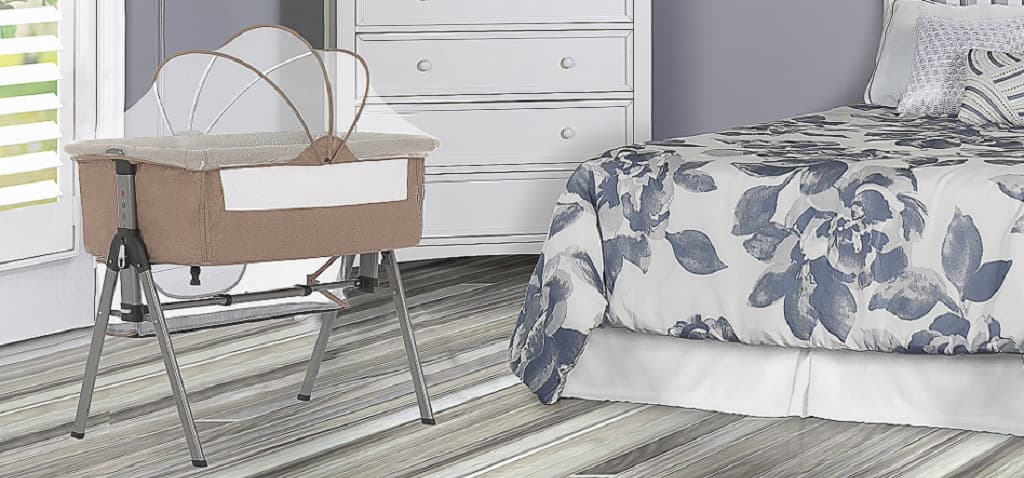
If your crib takes more than five minutes to assemble without tools, it’s too much. Especially after a flight. Especially with a baby on your hip. One dad told me his baby fell asleep in the car — and by the time he figured out which pole went where, she was wide awake and screaming. That’s when you realize: setup time isn’t just about convenience. It’s about preserving naps, tempers, and your sanity.
A crib that frustrates you at bedtime is a crib you’ll start avoiding. And that means your baby won’t learn to trust it either.
That’s why I always suggest doing a trial run before you travel. Set up the crib at home — in daylight, when everyone’s calm. Time it. Try folding it with one hand. Try lifting it with a baby on your hip. You’ll learn quickly whether it’s going to serve you — or sabotage you.
When Safety Features Meet Real Life
Manufacturers love highlighting safety certifications, mesh ventilation, and non-toxic materials — and yes, those matter. But safety also comes down to how a crib behaves when you’re sleep-deprived. Are there pinch points in the folding mechanism? Are the legs stable on an uneven floor? Do the zippers jam easily? These are questions that rarely show up in product descriptions but become painfully clear on the third night of a road trip.
I’ve worked with families who bought high-end models that technically passed every test — and still broke a nail (or a finger) trying to get them open. Meanwhile, a simpler, more intuitive crib may not have a flashy design but ends up being safer simply because it works every time. Don’t underestimate that.
Also: test it on a rug, on tile, on a hardwood floor. What feels solid in your nursery may slide around like a hockey puck in a hotel room. Add rubber grips or mats if needed — or better yet, pick a model that includes them.
The “Nap Refusal” Problem in Unfamiliar Places
Even with the best crib, you might hit resistance. New smells, new sounds, new light — babies notice it all. The crib can help with consistency, but don’t expect miracles. This is why I always coach families to bring at least one or two sensory “anchors”: a familiar blanket, a white noise machine, a bedtime story with mom’s voice. These bridges help a baby settle even when their environment changes.
A travel crib sets the stage — but the cast still needs cues. Think of it less like a magic box and more like a mobile bedtime routine. And always, always account for adjustment time. The first nap might flop. That’s okay. Predictability builds over days, not hours.
Making the Travel Crib Work for You
A travel crib isn’t a magic wand, but it can become one of the most useful tools in your parenting rhythm — if you treat it not just as gear, but as part of your child’s sleep story. And that story, like all good ones, needs consistency, a few familiar characters, and a place where the child knows what to expect.
What I’ve learned — both as a consultant and as a mom — is that the best travel crib is the one you’ll actually use. Not the most expensive. Not the one with the most five-star reviews. The one that folds quickly when your arms are full. The one that smells like home after a few trips. The one that your baby recognizes as theirs, no matter the city or climate.
One family I supported had twins, two wildly different sleepers. They kept two ultra-light cribs folded in the closet and could grab them blindfolded. They didn’t stress over hotel amenities or guesthouse cribs. Their system worked because it was theirs — tailored, practiced, and part of the way they traveled as a family.
A travel crib is not just for travel. It’s for sleepovers at grandma’s. For quiet corners at weddings. For afternoon naps in a park. It’s for reclaiming a little peace in unpredictable places.
So don’t overthink perfection. Think about what will support your child’s sleep — and your sanity. Test your crib. Make it part of your routine. Let it gather the smell of your laundry and the memories of naps in new places. That’s when it stops being equipment — and starts becoming home.


